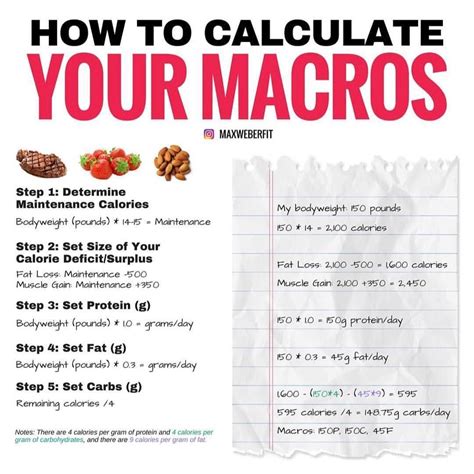How to Calculate Your Macros: A Simple Guide to Macronutrient Tracking
Knowing how to calculate your macros is crucial for anyone looking to achieve their fitness goals, whether it's weight loss, muscle gain, or simply maintaining a healthy lifestyle. Macronutrients – carbohydrates, proteins, and fats – provide your body with energy and are essential for various bodily functions. This guide breaks down the process, making macro calculation accessible and easy to understand.
Understanding Macronutrients
Before diving into the calculation, let's quickly review what each macronutrient does:
- Carbohydrates: Your primary energy source. They fuel your workouts and daily activities.
- Protein: Essential for building and repairing tissues, including muscles.
- Fats: Crucial for hormone production, cell function, and nutrient absorption. They also provide a concentrated source of energy.
Calculating Your Daily Caloric Needs
The foundation of macro calculation is determining your daily caloric needs. Several methods exist, but a simplified approach is using an online Basal Metabolic Rate (BMR) calculator. Many are freely available online. Simply input your:
- Age: Your age in years.
- Sex: Male or Female.
- Height: Your height in either centimeters or feet and inches.
- Weight: Your weight in kilograms or pounds.
- Activity Level: This is crucial. Be honest about your activity level – sedentary, lightly active, moderately active, very active, or extra active.
The calculator will provide your BMR, which represents the calories your body burns at rest. To get your total daily caloric needs, multiply your BMR by an activity multiplier based on your activity level. These multipliers generally range from 1.2 (sedentary) to 2.0 (extra active).
Example: If your BMR is 1500 calories and you're moderately active (multiplier of 1.55), your total daily caloric needs are approximately 2325 calories (1500 x 1.55).
Determining Your Macro Ratio
Now that you know your daily caloric needs, it's time to determine your macro ratio – the percentage of your total calories coming from carbohydrates, protein, and fats. The ideal ratio depends on your goals:
Weight Loss:
A common approach for weight loss is a higher protein ratio to promote satiety and preserve muscle mass while reducing fat intake. A sample ratio could be:
- Protein: 30-40% of total calories
- Carbohydrates: 30-40% of total calories
- Fats: 20-30% of total calories
Muscle Gain:
For muscle gain, a higher carbohydrate and protein ratio provides the energy and building blocks for muscle growth. A sample ratio could be:
- Protein: 30-40% of total calories
- Carbohydrates: 40-50% of total calories
- Fats: 20-30% of total calories
Maintenance:
To maintain your current weight, a balanced ratio is recommended:
- Protein: 25-35% of total calories
- Carbohydrates: 40-50% of total calories
- Fats: 25-35% of total calories
Remember, these are just examples. Experimentation might be needed to find the perfect ratio for your body and goals.
Calculating Your Macronutrient Grams
Once you have your daily caloric needs and macro ratio, you can calculate the grams of each macronutrient:
- Protein: 1 gram of protein contains 4 calories. Multiply your desired protein percentage by your daily caloric needs, then divide by 4 to get the grams of protein.
- Carbohydrates: 1 gram of carbohydrates contains 4 calories. Follow the same process as above, substituting your carbohydrate percentage.
- Fats: 1 gram of fat contains 9 calories. Follow the same process, substituting your fat percentage and using 9 instead of 4.
Tracking Your Macros
Use a food tracking app or a notebook to monitor your daily intake. Many free and paid apps are available, providing detailed nutritional information for various foods. Consistent tracking is key to adjusting your macros based on your progress.
Conclusion
Calculating your macros isn't rocket science. By following these steps and utilizing online resources, you can create a personalized plan that supports your fitness goals. Remember to be patient and consistent, and don't hesitate to adjust your macros as needed. Consulting a registered dietitian or certified personal trainer can offer personalized guidance.
